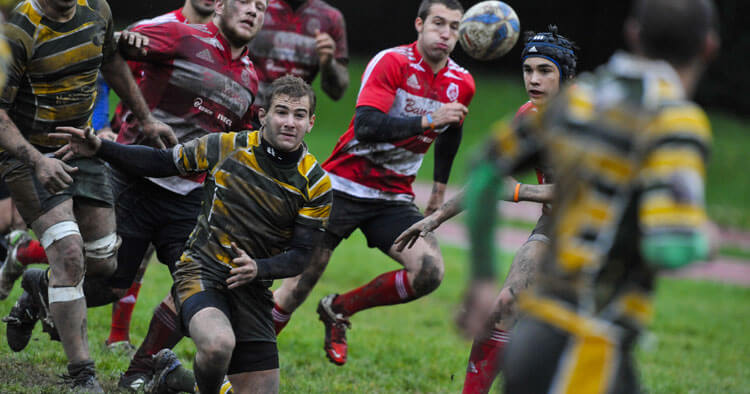Muscle Pain and Tendinopathy, Sports Injuries and Management
Muscle Contusion Injury, The Common “Corky”
What Is A Corked Thigh?
A muscle contusion is a very common injury, frequently referred to as a “cork” in sporting circles. Muscle cork injuries normally occur whilst playing contact team sports like soccer, AFL and the rugby codes, however are also commonplace in cricket, hockey or lacrosse where a hard ball, or object may strike the athlete. Muscle cork injuries are most commonly experienced in the thigh, with a “corked thigh” frequently occurring from the action of being “kneed” by an opponent in a tackle, or similar collision. Such injury can also occur in other regions of body including the calf, or upper arm, however these are significantly less common when compared to a corked thigh.
With a corked thigh, strong impact of another body part, projectile, or weapon impact to the leg causes the muscle to be crushed against the hard surface of the underlying bone (femur). This crushing of soft tissue between the opponents knee, or piece of sporting and the own athletes thigh bone, potentially causes significant bruising and bleeding to occur within the muscle and between the muscle and the femur. The majority of muscle contusions are minor, healing quickly without leaving the athlete sidelined for long, however severe contusions can cause deep soft tissue damage and even lead to complications inhibiting the individual returning to play for several months.
Types Of Muscle Contusion
- Intramuscular Contusion – An intramuscular contusion is a trauma of the muscle within the connective tissue sheath that surrounds it. The initial bleeding from the trauma gets trapped and is unable to escape, as the muscle sheath encasing the muscle prevents any swelling and bleeding escaping. This type of muscle contusion potentially can result in a considerable loss of muscle function, power, causing pain which can take several days, even weeks to recover. An intramuscular contusion injury is not likely to show significant bruising, especially not in the early stages as any bleeding is trapped in the compartment and can take days to “seep” out, or may resolve at a deeper level that it doesn’t always present as the familiar superficial purple bruising.
- Intermuscular Contusion – An intermuscular contusion is the tearing of the muscle and part of the sheath surrounding the muscle. As a result any initial bleeding can take longer to stop, creating more bruising and because it isn’t trapped inside the muscle / muscle sheath compartment bruising with an intermuscular contusion at least initially can be more spectacular. However, recovery is often faster than an intramuscular contusion, due to the blood and fluids resulting from injury can more easily flow away from the site of injury not “jamming” up the muscle as much, giving the athlete that prolonged sensation of having a thigh full of cork, as with an intramuscular contusion.
Having experienced both types of injury through football (soccer) although both are referred to as getting a corky, I personally feel the description of a “corked thigh” is really very apt with the sensation associated with an intramuscular contusion.
How Can You Tell Which Type Of Muscle Contusion It Is?
A quick rule is that if after a few days the swelling still has not gone down, then you probably have an intramuscular injury. With an intermuscular injury you are also more likely able to voluntarily contract the muscle following injury and if the bleeding has spread with visual bruising away from the site of the injury, then you probably have suffered an intermuscular injury.
Are Their Grades Of “Corked Thigh” Injuries?
A corked thigh can be graded for severity and the increase grade number indicates a more significant injury:
- Grade 1 – is a mild muscle contusion, the player will usually be able to continue playing after it occurs. The will however most likely feel some soreness at the time and following the match when cooled down and sometimes the following day or two. The ability to stretch the leg with a grade 1 injury is generally slightly reduced, with tightness of the thigh as well as tenderness to touch. There often isn’t a lot of swelling and the athlete can usually return to play within 1-3 weeks post injury.
- Grade 2 – is a moderate muscle contusion, an injury may likely prevent a player from being capable of continuing playing at the time of injury and for weeks afterwards. On stopping playing and cooling down, the player will often walk with a limp and there will be stiffening of the muscle and swelling. The are will be tender to touch with range of motion when stretching the muscle will be limited by up to 50% of the normal range. Return to play takes up to 6 weeks to bounce back from a Grade 2 corky.
- Grade 3 – is a severe muscle contusion, there is a rapid onset of swelling and obvious bleeding. Movement loss of the thigh will be severe and the player will have difficulty bearing full weight on the affected leg and unable to walk normally without crutches. They are clearly unable to play on at time of injury and the affected area is generally exquisitely tender to touch with muscle strength being notably diminished. Return to play is around 3-12 weeks post injury.
Disclaimer: Sydney Physio Clinic does not endorse any treatments, procedures, products mentioned. This information is provided as an educational service and is not intended to serve as medical advice. Anyone seeking specific advice or assistance regarding Muscle Contusion Injury, The Common “Corky” should consult his or her orthopaedic surgeon, general practitioner, sports medicine specialist or physiotherapist.


